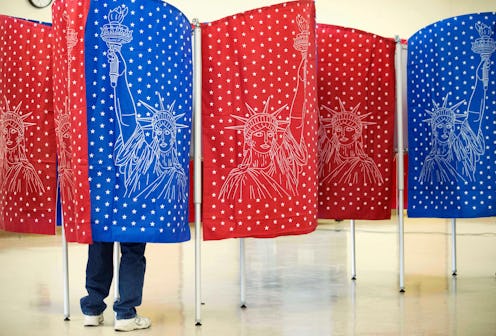News
How To Find Out About Third-Party Midterm Candidates In Your Area

Without options, life would be a lot more straightforward and a lot less interesting. When it comes to politics, your choices don’t stop at Republican and Democrat. But you might have to put in a little more work to find a candidate outside the two-party system whose views are closer to your own, though.
Politics in the United States operate, for the most part, according to a two-party system. Most officials belong to either the Democratic or Republican Party, and candidates who are not affiliated with either tend to get less attention (and fewer votes). But if you’re not a fan of either party, or if you’re looking for another option, don’t worry.
The majority of candidates running in the midterms are still affiliated within the two-party system, but there are 420 third-party candidates who have declared that they are running for Congress in 2018, according to Ballotpedia. There are also a handful of unaffiliated candidates running in 2018. These candidates aren’t members of any political party — they’re parties of one.
If you end up supporting a third-party candidate, you’re not alone. According to Gallup, 42 percent of Americans identified as independents in 2017, as compared to Republicans (27 percent) or Democrats (29 percent). And a survey Gallup conducted in December 2017 found that 61 percent of Americans believe U.S. politics needs a third major party to adequately represent the people.
What other parties are there?
Third-party candidates you might encounter in the midterms are associated with the Green Party, the Libertarian Party, the Constitution Party, and the Legal Marijuana Now Party. You can find out if any of those candidates are running in your state, and what office they’re seeking, by checking Ballotpedia’s state-by-state breakdown.
For example, if you live and vote in Pennsylvania, you’ll see Dale Kerns on your ballot in November. Kerns is a member of the Libertarian Party, whose political principles prioritize the free market and a near-total lack of government intervention in every aspect of life.
If you live and vote in Ohio, you’ll see Philena Farley, a candidate from the Green Party. The Green Party’s priorities include ecology, social justice, and sustainability.
And if you live and vote in Minnesota, you might encounter Dennis Schuller of the Legal Marijuana Now Party — whose values are exactly what it says on the tin.
Do third-party or unaffiliated candidates ever get elected?
There have been third-party candidates who gained significant attention and support and were elected to office. Sen. Bernie Sanders (I-VT) was elected to the House in 1990 and to the Senate in 2006 as an independent candidate, although in 2016 he ran to be the Democratic candidate for president. Sen. Angus King (I-ME), the former governor of Maine, also was elected as an independent candidate in 2013.
And any candidate can win an election, if enough people vote for them.